 Contrary to popular practice, it’s not smart to have dumb customers.
Contrary to popular practice, it’s not smart to have dumb customers.
The more your customers learn, the more profit you earn. The more your customers know, the more your business grows. The more your customers understand, the more powerful your brand.
LESSON LEARNED: Companies that teach, win.
Here’s a list of ways to make your customers smarter:1. Curators aren’t just for museums. In an increasingly commoditized marketplace, service is the key differentiator. Competing on price, performance, and features – aka, pure economic value – isn’t enough anymore.
Polly Labarre, columnist for The Huffington Post, wrote a classic piece on this very topic:
“Sure, customers love a good deal, but what they love even more is feeling like they’ve discovered something new. Increasingly, the best brands are waking up to the fact that the way to establish an enduring connection with customers is not to push their own stuff, but to act as a curator; a host to a whole universe of stuff they think will click with people based on shared values.”
Introduce your customers to new things. Help them feel more connected to the front edge of culture. They’ll forget all about the fact that you sell a commodity. What value do you provide beyond low price and high quality?
2. Teaching diffuses sales resistance. Brian Clark, award-wining writer of CopyBlogger and the creator of Teaching Sells explains:
“When you come rushing out of the gate selling, it’s easy for people to resist. But when you establish yourself as a teacher who people have bonded with, it gets much harder to say no by the time the transaction is proposed.”
That’s the reality of the current marketplace: Any idiot can lead their customers down a path, but only smart companies can help their customers discover the path on their own.
The goal is to stop giving sales pitches and start delivering lesson plans. If you do that, even if it’s a simple attitudinal adjustment from sales-oriented to education-oriented, the entire buying experience will shift.
Remember: Customers aren’t people who pay your salary – they’re pupils who attend your class. How’s your enrollment this semester?
3. Become a wealth of inform. Because my specialty is approachability, I’ve hosted a lot of workshops for retailers. Namely, jewelry stores. And during a recent round of presentations (video here), I made three suggestions to help the store owners turn rare into remarkable by introducing education.
First: What if, in the corner of your store, you had an entire shelf filled with bestselling books on relationships, romance and interpersonal communication? That way, while stupid husbands buy jewelry to make up for forgetting their wedding anniversary – again! – they could learn a few tips on how to better communicate with their spouses and avoid the doghouse.
Second: What if, once a week, you invited a local fashion consultant to come in the store? She could advise customers on wardrobe, accessories and current style trends to help them present themselves smarter, and not get fired for dressing like a streetwalker.
Third: What if, on the last Friday of each month, you brought in a local relationship therapist to provide tune-ups for newly engaged couples? He could offer suggestions, exercises and advice to help people make their fourth marriages work.
Ultimately, these suggestions work not only because they’re education-based, but also because they’re rare. And rare becomes remarkable. And remarkable becomes repeatable. And repeatable becomes profitable. What are you willing to lose on the first sale in order to guarantee a relationship?
4. Education means fascination. I understand your hesitancy. You think that if you make your customers smarter, they won’t need you. Not true. In fact, it’s the exact opposite. If you expand their thinking, grow their knowledge base and stretch their brains, they’ll actually need and love and respect and want you more.
And the best part is: Companies that educate, fascinate. And fascination, according to author and consultant Sally Hogshead, plays a major role in every type of decision-making – from the brands you choose, the songs you remember, the person you marry, and the employees you hire.
The hard part is to trust yourself, trust your resources and trust the process. And to believe that the people you add value too won’t outgrow their need for your help. How fascinating do customers think your organization is?
5. Reframe exit questions. Over the years I’ve consulted with dozens of hotels, hospitality associations and other customer service organizations. And in my experience, the best question to ask a customer at the end of a transaction is not, “How else may I be of service to you?” but rather, “What else can I help you learn?”
The reality is, customers don’t need more service – they need more answers. And this particular question works for three reasons: First, it’s unexpected. And the best way to attract someone’s attention is to break her patterns.
Second, it’s thought provoking. And anytime your customers are thinking more and complying less, you win. Finally, it’s open ended. This decreases the likelihood of hearing the most useless, unleverageable customer answer of all time: “Fine.” Does your organization deliver customer service or customer answers?
6. Mum is overrated. Here’s a lesson I learned the hard way: The only thing worse than saying something untrue is saying nothing. Turns out the opposite of honesty isn’t lying – it’s omitting.
Sadly, too many organizations – who are (clearly) terrified of having smart, healthy, proactive customers – are keeping their mouths shut at the expense of the people they serve. Believe it or not, the United States government actually did something cool for a change. They were smart enough to stop shutting up.
In 2009, www.recovery.gov was launched as is the government’s official website that provides easy access to data related to Recovery Act spending.
It allows for the reporting of potential fraud, waste and abuse. And it has pictures, graphs, numbers, interviews, videos – you name it. All in the name of not staying mum.
I wonder what your organization is choosing not to reveal to your customers that’s actually causing more stress, pain and profit than if you had just told the truth in the first place. I wonder. Are you willing to be honest and direct at the risk of jeopardizing the relationship?
7. Send a continuous flow of education. That way, your buyers always know how to more creatively, efficiently and effectively use what you sell them to grow their business and make their lives better.
That’s why I tweet all morning. That’s why I blog everyday. That’s why I send out an ezine every other week. That’s why publish videos every month. And that’s why I put out three books a year.
Not just because it expands my platform. Not just because it earns my enterprise money. And not just because it markets my business. But because it consistently teaches the people who matter most how to matter more.
The way I see it: The smarter I make my audience, the better their world will become. And if they realize that my work played a small part in the betterment of their life, they’ll come back, hungry for more. And next time they’ll bring their friends. What did you write today?
8. Smarter means surrendering. In Michael Moore’s documentary, Sicko, he travels to France and interviews several doctors and professors. He discovers that the French government provides social services health care, public education, vacation, day care for one dollar an hour and neonatal support that includes cooking, cleaning, and laundry services for new mothers.
But here’s the part that rocked me to my core: One professor explained, “When you have a population of people that are healthy, educated and unafraid, it’s impossible to control them.”
Huh. No wonder corporations and organizations are afraid of educating their people: They don’t want to lose control. Interestingly, I recently watched a vintage interview with global innovator, Buckminster Fuller, who echoed the same sentiment. He helped me realize why it’s so hard for some businesses to risk making their customers smarter:
“Governments, religions and businesses would find it devastating to their activity to have humanity a success. They are predicated on you being an inherent failure.”
Surrendering control doesn’t mean losing it. You’ll be fine. How are you leveraging your vulnerability to make your customers smarter?
9. Refuse to leave people where they are. Customers don’t want to be handled. Or managed. Or dealt with. They want to be better. And the only way that’s going to happen is if you add value to them.
My suggestion: Stop handling and start educating. Make a list of the fifty most common questions asked by your customers. Write a paragraph-long answer for each one. Hire a professional designer to convert the text into a downloadable ebook.
Then, give it away for free on your website. Print out hard copies. Hell, save it on jump drives with your logos on it and physically hand it to every customer that walks in the door along with a note that read, “Fifty answers to the fifty questions running through your head right now. You’re welcome.” That’s what I would do.
The point is, when you deliver education to your customers, move forward with your customers and stay relevant in the eyes of your customers. If you were arrested and charged with adding value to people, would there be enough evidence to convict you?
REMEMBER: Companies that teach, win.
Don’t be dumb.
Make your customers smarter.
LET ME ASK YA THIS…
Are you selling or educating?
LET ME SUGGEST THIS…
For the list called, “26 Ways to Out Brand Your Competitors,” send an email to me, and you win the list for free!
* * * *
Scott Ginsberg
That Guy with the Nametag
Author, Speaker, Entrepreneur, Mentor
[email protected]
 Never the same speech twice.
Never the same speech twice.
Always about approachability.
Watch The Nametag Guy in action here!

 When was the last time you were paralyzed by the threat of insignificance?
When was the last time you were paralyzed by the threat of insignificance?
 I was in Tokyo when it happened.
I was in Tokyo when it happened. The evidence is overwhelming:
The evidence is overwhelming: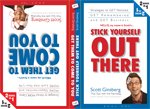 The world’s FIRST two-in-one, flip-flop book!
The world’s FIRST two-in-one, flip-flop book! I was sitting on my mom’s couch when it happened.
I was sitting on my mom’s couch when it happened.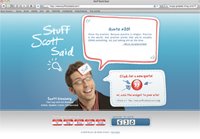 Who’s quoting YOU?
Who’s quoting YOU? Stick-to-itiveness can be learned.
Stick-to-itiveness can be learned. Who’s quoting YOU?
Who’s quoting YOU?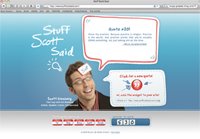 Who’s quoting YOU?
Who’s quoting YOU? Last week I wrote a post called,
Last week I wrote a post called, 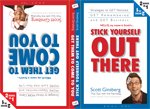 The world’s FIRST two-in-one, flip-flop book!
The world’s FIRST two-in-one, flip-flop book! Did you know that most “close door” buttons on elevators don’t work?
Did you know that most “close door” buttons on elevators don’t work?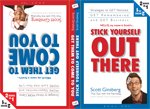 The world’s FIRST two-in-one, flip-flop book!
The world’s FIRST two-in-one, flip-flop book!